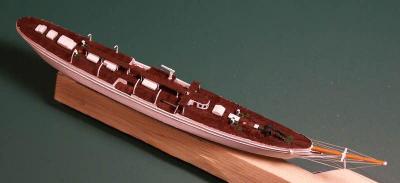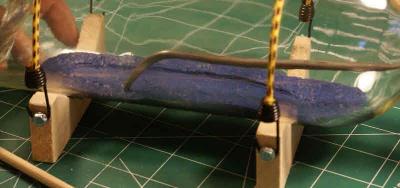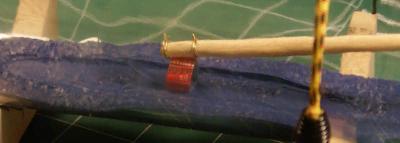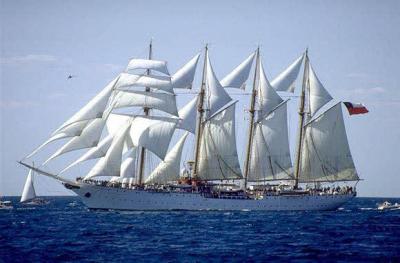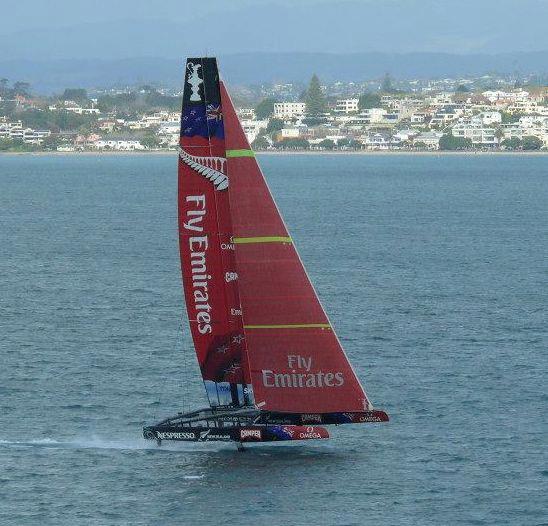1.
What is your name?
David Fellingham
2.
Where in general are you from?
I grew up in
Iowa and presently live in California
3.
How long have you been building ships in
bottles?
I’m not sure, at least 30 years. I have been interested
in sailing ships, ship models and nautical history for over 50 years – my first
scratch build was at age 9 from a scrap piece of 1 x 4, a tin can and two short
pieces of small diameter pipe – the Civil War Monitor.
4.
What got you into ship in bottle building?
My initial
interest in sailing ships, nautical history and ship models began with reading
C. S. Forester’s Hornblower series when I was 8 years old.. Later, work had me
moving quite frequently, which is not very conducive to building ship models. I
came across a book in a bookstore about building ships in bottles; seemed to be
a perfect way to continue my interest in ship models while remaining mobile –
all my tools, supplies and the current project could be packed and transported
in a medium size tackle box.
5.
What was the first ship in bottle you ever
built?
A generic late 19th century two-masted
schooner from the SIB book I bought.
6.
What was your favorite build?
My favorite build has always been the one I had just
completed until I start a new one, then the current project would become my
favorite. I gave away almost all my SIBs (or lost them during moves). I
completely lose interest in finished projects when I am working on a new one.
That’s why I still don’t have any of my own. The most fun SIB was a submarine in
a bottle – a sea with a very small periscope. Almost everyone who saw it picked
up the bottle and turned it over and over looking for the rest of the sub.
7.
What do you think makes your ships in bottles
unique?
Perhaps my attention to detail. I think the sea for my waterline
models (the only kind of SIB I do) is more accurate to reality than almost any
I have seen. For several years, my work was on offshore oil platforms off the
southern California coast in deep water far from shore, which is the kind of
sea where sailing ships spent 99.99% of their time. Most of that work included
a journey by boat of as much as two hours, one way, to and from the platform
every day. I had the opportunity to study and memorize the ocean’s appearance
under just about all conditions from calm and flat to 40 mph winds and 30 foot
waves (from trough to peak) which was just about the limit of what the crew
boats could handle. Most people think deep-water seas look like the surf at a
beach – but the only similarity between the two is that they are both salty and
wet.
8.
What types of ships do you prefer?
In general, I prefer pure sailing ships. At present, I
find myself most interested in the smaller warships of the early 1800s up to
the time just before the introduction of steam. My favorite ships are topsail
schooners (aka Baltimore Clippers) with a very radical mast rake that makes
them look like they’re doing 10 knots even at anchor.
9.
What is your favorite part of ship in bottle
building?
I enjoy solving the unique problems presented by each
build. I also enjoy the rigging when I get to see the results of all the
different pieces coming together into a whole.
10.
Is there a design or method that you use that
you are particularly proud of?
I am very pleased with the box joint mast hinges I
developed that are invisible when the mast is erected unless the viewer knows
what to look for.
11.
Have you had any instances where a build went
horribly wrong?
Of course! Maybe not “horribly” wrong but I have had
difficult problems crop up more frequently than I care to remember getting a ship
in the bottle or setting up the masts. Each time the problems occurred because
I failed to plan ahead well enough or to do a trial fit with the hull, bare masts
and minimum rigging to check that everything fits and test the mast erection. On one occasion, I omitted
the test and later found that the main mast was too tall after the fore mast
was set and glued. I had a lot of rigging and several spars to replace by the
time I got the ship out of the bottle. I ALWAYS make a trial fit since that
disaster.
12.
What are some of your favorite materials to use?
I fabricate many things from wire as fine as 45 gauge. I am
also very pleased with a brand of fly tying thread I found. On my current
build, I found that the fly tying thread can be taken apart into the twisted
yarns that were twisted together to make the thread and I will use those yarns
for ratlines when I get to that point on my current build. The yarns, at less
than .001 inch diameter, work out to be the right size for 5/8 inch rope at
1/640 scale. I also like paper stiffened with ca glue in a variety of detail
applications.
13.
What are some of the most unusual materials
you’ve used in a build?
I once used human hair to rig a SIB in a glass
airline-size liquor bottle. I will never do that again because hair is very
difficult to work with in almost every regard.
14.
What creative tools have you created?
I make many
special purpose tools for working inside the bottles as the need arises.
15.
What books do you recommend for ship in bottle
building?
Just about any book on building SIBs covers the basics
well enough for a beginner and provide a foundation for the rest of the
learning process, which will never end. I have learned more in the last year
after meeting other SIB builders through the internet than in the previous
thirty. Shipbuilding in Miniature by
Donald McNarry, although not about SIBs, has a wealth of information about
miniature ship modeling techniques that are adaptable to SIBs.
16.
What is the most interesting bottle you have
found?
A bottle is analogous to a painter’s canvas or a picture
frame as far as I am concerned. I feel that complex, ornate or extremely unusual
bottles distract the viewer from what is important – the ship inside the
bottle. I feel the same way about display stands and exterior decoration. I
believe strongly in the KISS principle – “Keep It Simple, Stupid.” The only
criteria I have for bottles are clarity, uniform thickness for minimal
distortion, usable interior space and the inside diameter and length of the
neck. I found sources for laboratory glass which is what I intend to use from
now on. The only exception I would consider is a classic Pinch bottle.
17.
What’s
the most unique place or way you have found a bottle?
not applicable, see #16
18.
What is your favorite response to the question,
“How did you get it in there?”
I thought of several smart-ass responses over the years
but never use them. I explain the basics simply and concisely.
19.
What ships are on your to do list?
I don’t have a “to do” list as such. I have a mental list
of ships that intrigue me for any number of reasons as possible future builds.
At some point during a build in progress, I find myself thinking about what to
build next – usually while working on some of the boring, repetitious details
that occupy only a part of my attention. Eventually one or two of the
“possibles” rises to the surface, so to speak, and I start the necessary
research. My next build is going to be a conventional wood ship model from a
kit – Caldercraft’s Cruizer, a
British brig of war from the Napoleonic Wars modified slightly into one of the
other 105 brigs built from the same plans in that period. It will be an
interesting change to work on a relatively huge 1/64 scale model after working
at 1/640 scale on my current project. I’m considering building the same brig
from scratch in a large bottle concurrently.
20.
What are you currently working on?
I am currently building the Chilean Navy School Ship Esmeralda at 1/640 scale. Esmeralda is a four masted barquentine
and the second longest and tallest conventional sailing ship in the world. Photo
albums of progress photos are posted on the Ship in Bottle Builders and my
personal facebook pages. I also have a comprehensive build log for Esmeralda on the Model Ship World
website.
